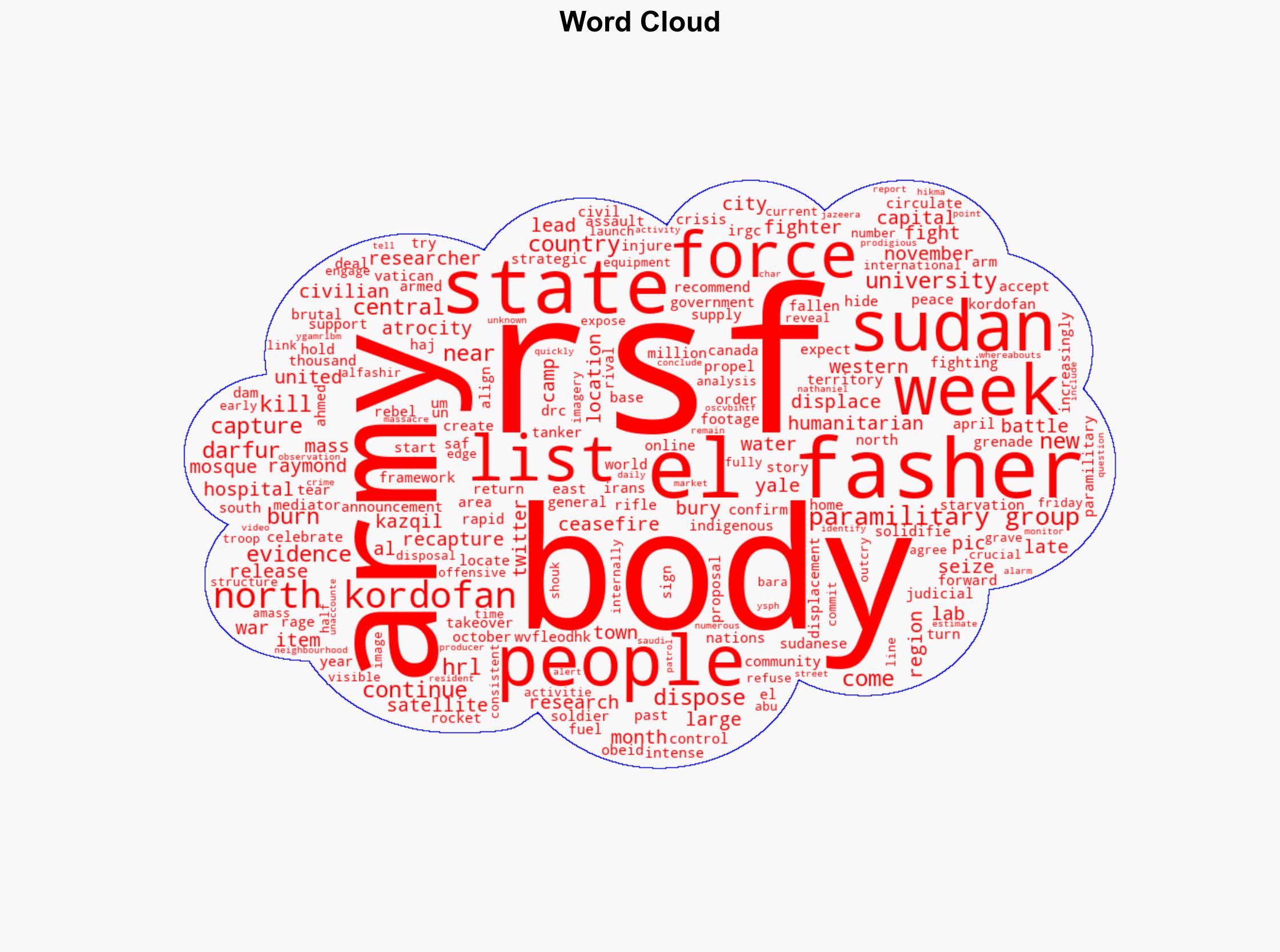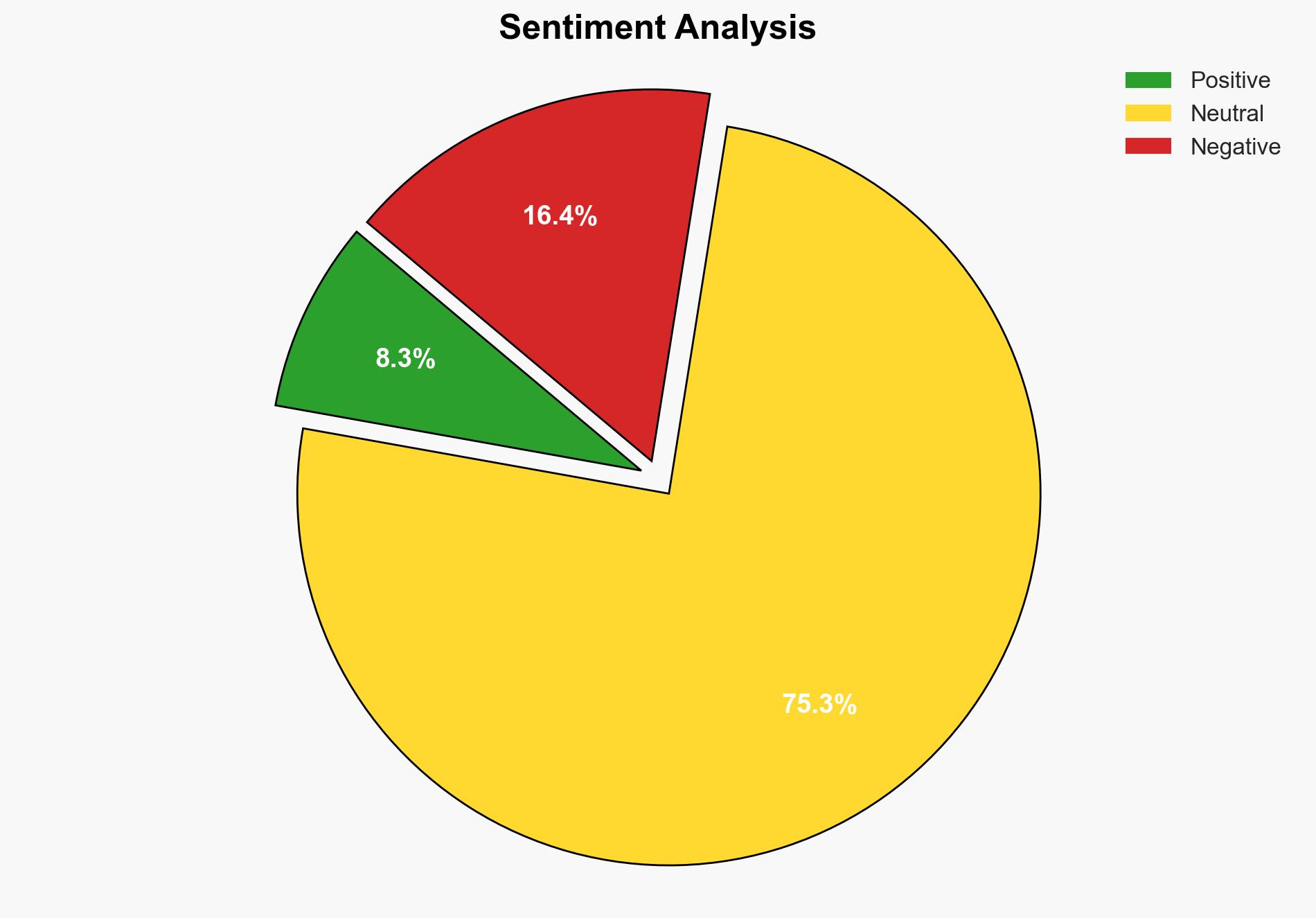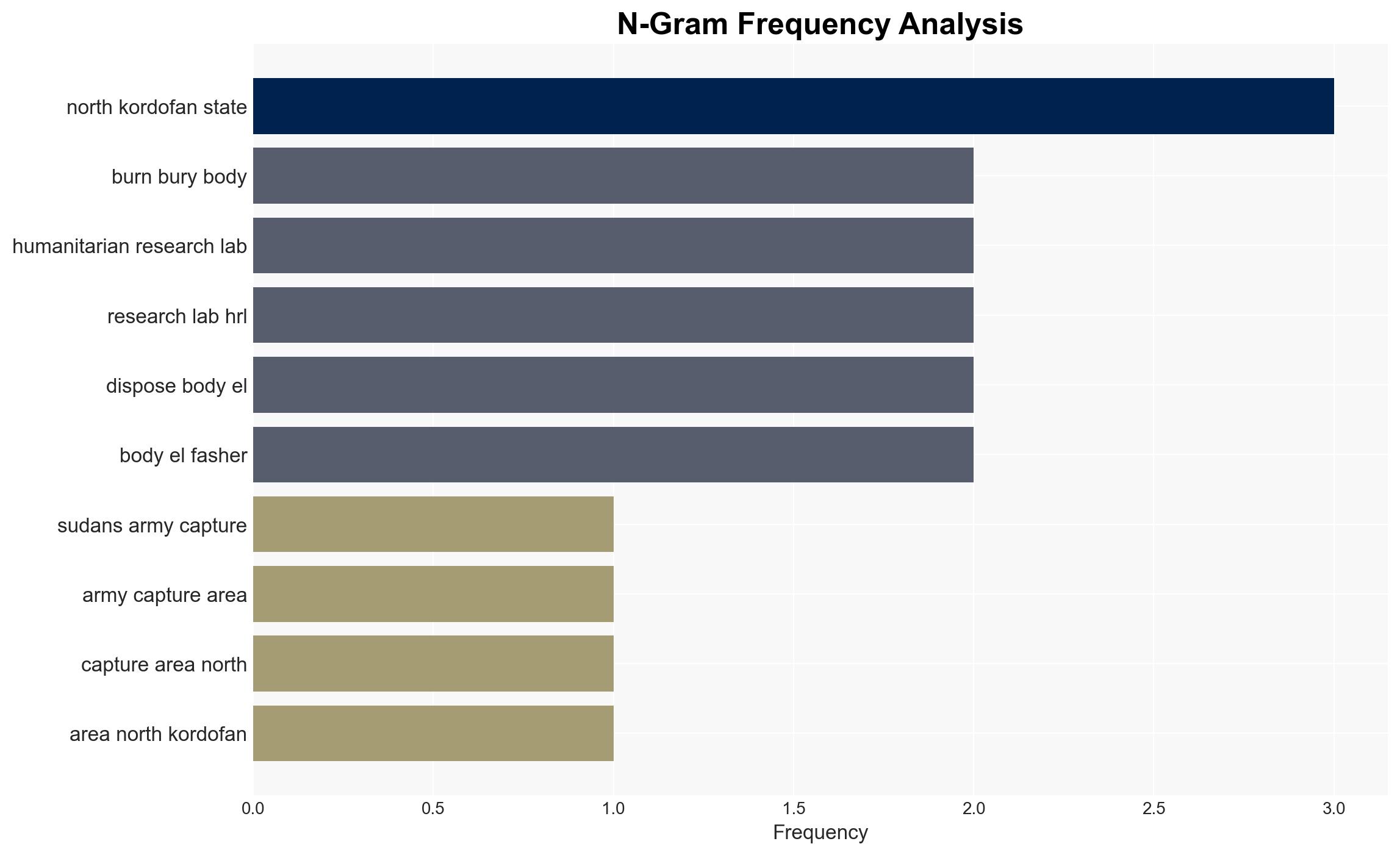Sudans army captures two areas in North Kordofan as RSF burns more bodies – Al Jazeera English
Published on: 2025-11-15
AI-powered OSINT brief from verified open sources. Automated NLP signal extraction with human verification. See our Methodology and Why WorldWideWatchers.
Intelligence Report:
1. BLUF (Bottom Line Up Front)
The ongoing conflict between Sudan’s army and the Rapid Support Forces (RSF) in North Kordofan and Darfur is escalating, with both sides committing severe human rights violations. The most supported hypothesis is that the RSF is attempting to consolidate control over strategic areas while the Sudanese Armed Forces (SAF) aim to regain lost territories. Confidence Level: Moderate. Recommended action includes international diplomatic engagement to enforce a ceasefire and humanitarian intervention to address the crisis.
2. Competing Hypotheses
Hypothesis 1: The RSF is systematically committing atrocities to instill fear and consolidate control over strategic regions, particularly in Darfur and North Kordofan. This hypothesis is supported by evidence of mass graves and body disposal, indicating an attempt to hide war crimes.
Hypothesis 2: The SAF is strategically recapturing territories to weaken the RSF’s hold and restore government control, using military offensives to regain strategic locations. This is evidenced by the recent recapture of towns in North Kordofan.
The first hypothesis is more likely given the RSF’s documented history of human rights abuses and the current evidence of mass killings and body disposal.
3. Key Assumptions and Red Flags
Assumptions include the RSF’s continued access to arms and resources, and the SAF’s capability to sustain military offensives. Red flags include the potential for misinformation or propaganda from both sides, and the risk of international actors exacerbating the conflict through arms supplies or political support.
4. Implications and Strategic Risks
The conflict poses significant risks of regional destabilization, potentially affecting neighboring countries through refugee flows and cross-border violence. There is a risk of further humanitarian crises, with increased displacement and civilian casualties. The conflict could also attract international jihadist elements seeking to exploit the chaos.
5. Recommendations and Outlook
- Engage in diplomatic efforts to broker a ceasefire and initiate peace talks, leveraging international organizations such as the UN and African Union.
- Implement humanitarian corridors to deliver aid and evacuate civilians from conflict zones.
- Monitor and document human rights abuses for potential future prosecutions.
- Best-case scenario: Successful ceasefire and commencement of peace negotiations.
- Worst-case scenario: Escalation into a full-scale civil war with regional spillover.
- Most-likely scenario: Continued skirmishes with intermittent ceasefires and ongoing humanitarian crises.
6. Key Individuals and Entities
RSF leadership, SAF command, Nathaniel Raymond (Yale University researcher), and international mediators.
7. Thematic Tags
Structured Analytic Techniques Applied
- Cognitive Bias Stress Test: Expose and correct potential biases in assessments through red-teaming and structured challenge.
- Bayesian Scenario Modeling: Use probabilistic forecasting for conflict trajectories or escalation likelihood.
- Network Influence Mapping: Map relationships between state and non-state actors for impact estimation.
Explore more:
National Security Threats Briefs ·
Daily Summary ·
Support us
·





